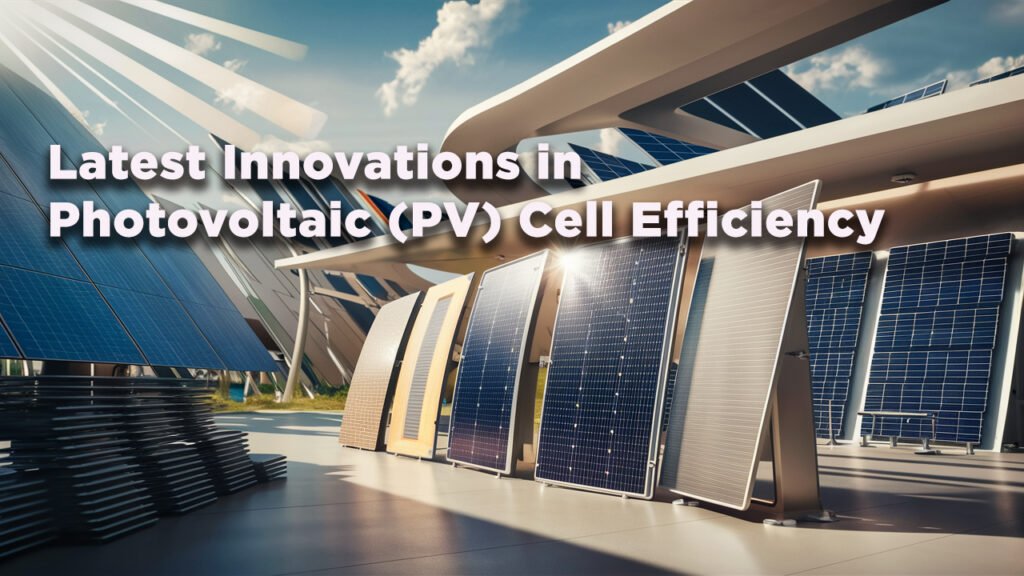As the global transition to renewable energy accelerates, photovoltaic (PV) technology continues to lead the charge in providing sustainable, scalable solutions for electricity generation. Over recent years, groundbreaking advancements in PV cell efficiency have reshaped the solar energy landscape. This article delves into two of the most promising innovations: perovskite solar cells and thin-film technologies.
The Rise of Perovskite Solar Cells
Perovskite solar cells have emerged as a transformative technology in the solar industry. Named after their unique crystal structure, perovskites exhibit exceptional light absorption and charge-carrier mobility, making them ideal candidates for high-efficiency PV applications. Laboratory research has pushed perovskite cell efficiencies from less than 4% in 2009 to over 25.8% in recent years, rivaling traditional silicon-based cells.
Key innovations driving this rapid progress include:
- Hybrid Tandem Structures: Combining perovskites with silicon in tandem cells allows for broader spectrum absorption, achieving efficiencies exceeding 30%.
- Stability Improvements: Researchers are developing advanced encapsulation techniques and material compositions to combat perovskite degradation from moisture, heat, and UV exposure.
- Scalable Manufacturing: Techniques like roll-to-roll printing and solution processing are making it feasible to produce perovskite solar cells at scale while maintaining cost-effectiveness.
The potential of perovskites extends beyond efficiency. Their lightweight and flexible properties open doors for applications in building-integrated photovoltaics (BIPV), portable devices, and even space-based solar arrays.
Advances in Thin-Film Technologies
Thin-film solar cells, characterized by their ultra-thin active layers, have gained traction due to their versatility and lower material requirements. These cells are made from materials such as cadmium telluride (CdTe), copper indium gallium selenide (CIGS), and amorphous silicon (a-Si). Recent innovations have significantly enhanced their efficiency and applicability.
- CdTe Enhancements: CdTe cells now achieve efficiencies above 22%, thanks to advancements in doping techniques and interface engineering that improve charge transport and reduce energy losses.
- CIGS Optimization: Improved deposition methods, such as co-evaporation and sputtering, have pushed CIGS cell efficiencies to nearly 24%, making them competitive with silicon-based technologies.
- Bifacial Thin-Film Modules: New designs that capture sunlight from both sides of the module are boosting energy yield, especially in high-albedo environments like deserts.
Thin-film technologies also benefit from their ability to be integrated into unconventional surfaces, including curved and flexible substrates. This versatility makes them suitable for applications ranging from rooftop installations to wearable solar devices.
Beyond Efficiency: Sustainability and Cost
While improving efficiency remains a primary focus, researchers are increasingly prioritizing sustainability and cost reduction. Efforts include reducing the reliance on rare or toxic materials, such as lead in perovskites and cadmium in CdTe cells, and exploring abundant alternatives like iron and tin-based compounds. Simultaneously, recycling programs for PV modules are being developed to address end-of-life challenges and minimize environmental impact.
The Road Ahead
The synergy between perovskite and thin-film technologies is likely to define the future of PV innovation. Hybrid systems combining these technologies could unlock unprecedented efficiencies and applications. Furthermore, as production techniques mature and economies of scale come into play, the cost of advanced PV modules will continue to decline, making solar energy increasingly accessible worldwide.
As the industry progresses, these cutting-edge innovations promise to propel solar power to new heights, solidifying its role as a cornerstone of the global energy mix. With continued investment in research and development, the dream of a solar-powered future is closer than ever.

